In his high pitched but sonorous voice he would invoke the names of the Prophet’s (pbuh) family and the martyrs of Karbala. At some point he had come to the conclusion that the street my house was on was populated by Shias who would be moved to give charity when he called out the names of Hussain (ra), Abbas (ra) and Sakina (ra).
The people were happy to give in remembrance of Hussain (ra) and he multiplied his income many times in the first ten days of Muharram. People would rush out at his voice and coins, paper notes, food and drink would be showered on him. He was half correct. The names of Ahle Bait did move the people to action, but not because the homes were occupied by Shias. Rather, more than half were Sunnis, but going by his takings the beggar could be forgiven to think the denizens were Shias.
At one point it was. In 1947 my clan moved from the town of Amroha in Uttar Pradesh, India and many including my family settled in Pir Illahi Buksh (PIB) Colony. From there, we all went en masse to Nazimabad and when plots in Federal B Area came up for sale they bought rows of plots in adjacent streets. However, by the time I was born, many of the plots had been resold and the buyers were mostly Sunnis from varying backgrounds. Such was the syncretism that I saw in late 80s and early 90s that let alone the beggar, even I did not know the sectarian background of the people I used to play cricket with or visit homes.
Nazar and niyaz would be a regular feature in all the homes and there would be no music or loud TV noises coming from anywhere. As Muharram moved into its second week the young men would go home to home collecting funds for the haleem preparations which would be cooked almost exclusively by Sunnis. The whole night would be spent in tending to the fires and mixing the ingredients in huge metal cauldrons. At the time of fajr, the niyaz would be done and portions distributed among all. As a child I used to think this is unique to my mohalla or a Shia act, but in fact the haleem niaz was a long standing Sunni tradition.
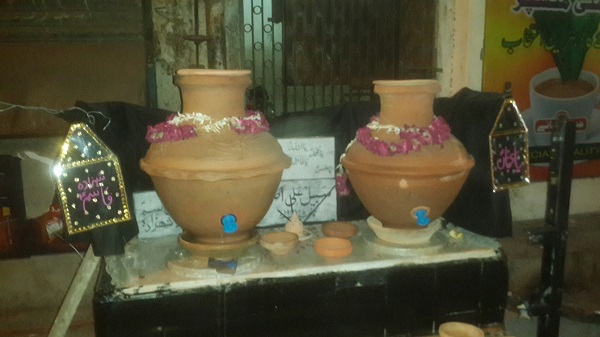
If we go back these harmonious accounts are even more common. My father often talks about his teenage years in which his Sunni friends would pool in and help him decorate the alam for processions. They wanted to beautify it as much as their meager funds would allow and once it would be ready they would all join in. Lifting it in turns, they would traverse the whole route of the procession and slake their thirst at sherbet and water sabeels set up by Barelvis. They have a long tradition of service to Hussain (ra) and at eighth Muharram juloos organised by the Amroha clan, I met another one of them who was following this tradition.
Abdul Shakoor was part of the Rangers contingent that was tasked with security for mourners. Twenty years back, there was no need of closing down the city, as the procession moved on one road, the other track would still have traffic. When the juloos came to a certain road, traffic would be diverted for a while and then reopened when it had passed. At Empress Market, curious Christians would join in for a bit, taking in the spectacle and chatting with the people in procession.

It’s a very different situation and Shakoor bhai was vigilant at his post. He first admonished me for getting too close to the security parameter, but then softly said he is only following instructions. I asked him about Muharram and the travails of his 12 hour shift. His simple response was,
“Imam Hussain (ra) belongs to all of us and I am lucky that I am able to do a small bit. In this way I do my duty, but more importantly I get an opportunity to do ziarat of these alams.”
When I offered him the box of food mourners get in juloos, he politely declined saying that ziarat is enough and he will eat once his shift ends.
Along the way I spoke to Sunni policemen, ambulance workers, media personnel, scouts and other members of the administration that make the procession possible. They all more or less repeated what Abdul Shakoor had said. Mohammad Akbar, a scout who was sweating profusely under the hot sun and with the strain of keeping the perimeter rope taut, had signed up for juloos duty over three days: eighth, ninth and 10th.
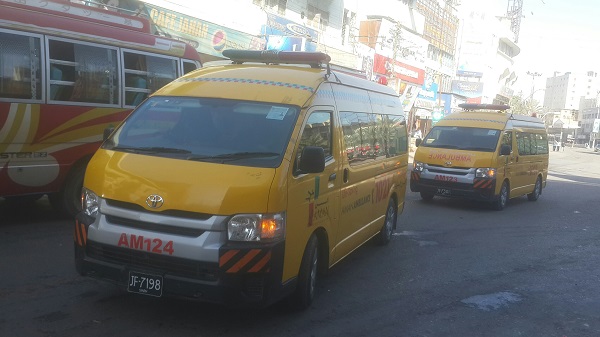
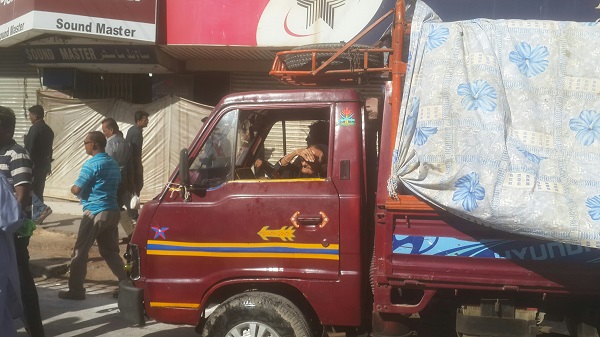
“I wait all year for this,” he said. “I first heard the story of Karbala from my grandmother and since then, I have paid my respects in whatever way I can. He saved Islam and how could I do otherwise?”
Wasim Ahmed, the Aman Foundation ambulance driver was more succinct.
“Our Prophet (pbuh) said, ‘I am from Hussain and Hussain is from me’. After this what else can I say or do.”
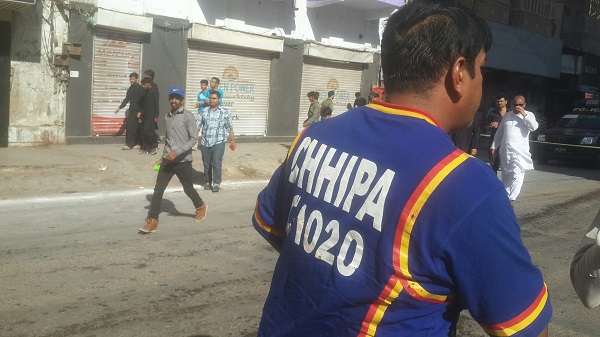
As the juloos made its way through Napier Road there were children from the Memon community standing by. Wearing white prayer caps, they wanted to cross the juloos to go to the masjid close by and asked the Rangers guard and administrative representative if they can break through the line of alams. Naturally they were allowed and I walked with them for a while.
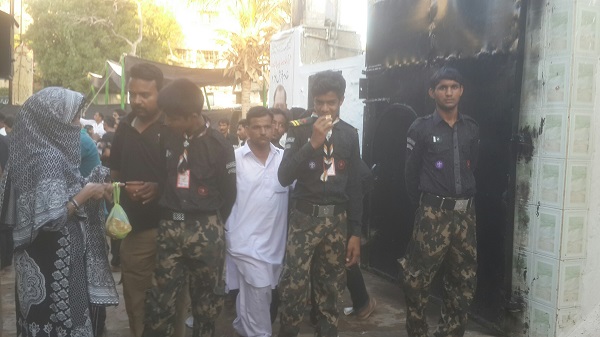

After a quick round of introductions, I asked them if they minded being hemmed in their own neighbourhoods due to security concerns.
“We can understand why this happens and fully support and sympathise with the mourners. It wasn’t always like this and we would actually join the juloos from here to Denso Hall. Evil people have done so much harm that this security is necessary and we are ready for some hardship for security of juloos,” a young man with a light beard who looked like the leader of the group responded.
“Besides we share your grief for Imam Hussain (ra). Our support is a small service for what he did and stood for.”
As the juloos ended at Imam Barah Iranian, I saw groups of Sunni women, conspicuous in their coloured clothing that stood out in a sea of black, doing ziarat and niyaz of sweetmeats and batashay. Many had gone inside for making mannats at the shrine.
Tying a bit of red string they had prayed for children, health, jobs, happiness or whatever their heart desired. Some were there to fulfil their vows on fulfillment of their wishes. Their men were not part of the juloos, but I hope one day they will join in like in the days of my father’s youth.
People like Abdul Shakoor, Mohammad Akbar and Wasim Ahmed are part of the overall tradition of Karbala. They spouse the values of service, duty, sacrifice and love for the Ahle Bait. In a time when sectarian tensions dominate the narrative, it is important to remember the role of the silent majority as well. On October 15th, I will go for two Haleem niaz, one by a Shia friend and another by a Sunni. I am glad to see a part of my and my father’s childhood is still alive.
We must make sure it remains so.
All photos: Sibtain Naqvi



COMMENTS
Comments are moderated and generally will be posted if they are on-topic and not abusive.
For more information, please see our Comments FAQ